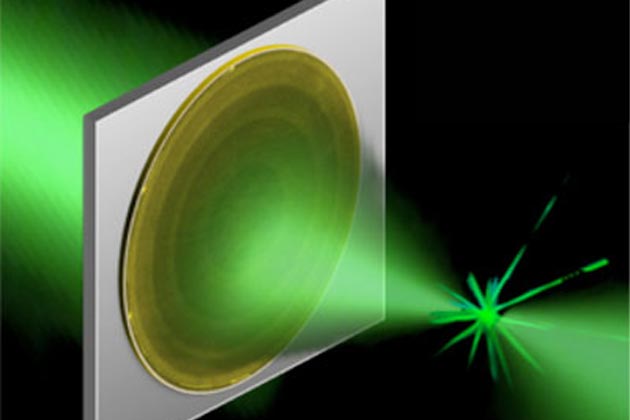Harvard physicists develop new ultrathin flat lens
 Physicists at Harvard’s School of Engineering & Applied Sciences have invented an ultrathin flat lens that eradicates optics aberrations that come with existing wide-angle lenses.
Physicists at Harvard’s School of Engineering & Applied Sciences have invented an ultrathin flat lens that eradicates optics aberrations that come with existing wide-angle lenses.
A team of physicists led by Professor Federico Capasso developed the flat lens, which is merely 60 nanometres in thickness, by plating an ultra thin wafer of silicon with a one nanometre-thick layer of gold.
The researchers said the flat lens eliminates optical aberrations like that of the “fish-eye” effect, astigmatism and coma, which results from usual wide-angle lenses. Thus, the new lens produces a wholly accurate image or signal without use of any complex corrective techniques.
They claimed that instilling this level of performance into what is fundamentally a two-dimensional material was a marvelous achievement.
Federica Capasso, the principal investigator of the study, said, “Instead of creating phase delays as light propagates through the thickness of the material, you can create an instantaneous phase shift right at the surface of the lens.”
Capasso described the new way of producing lenses as “extremely exciting,” and expressed hope that the development would allow replacement all the bulky lenses in the majority of optical systems with flat surface lenses.
The study published in the most recent online issue of the scientific journal Nano Letters.